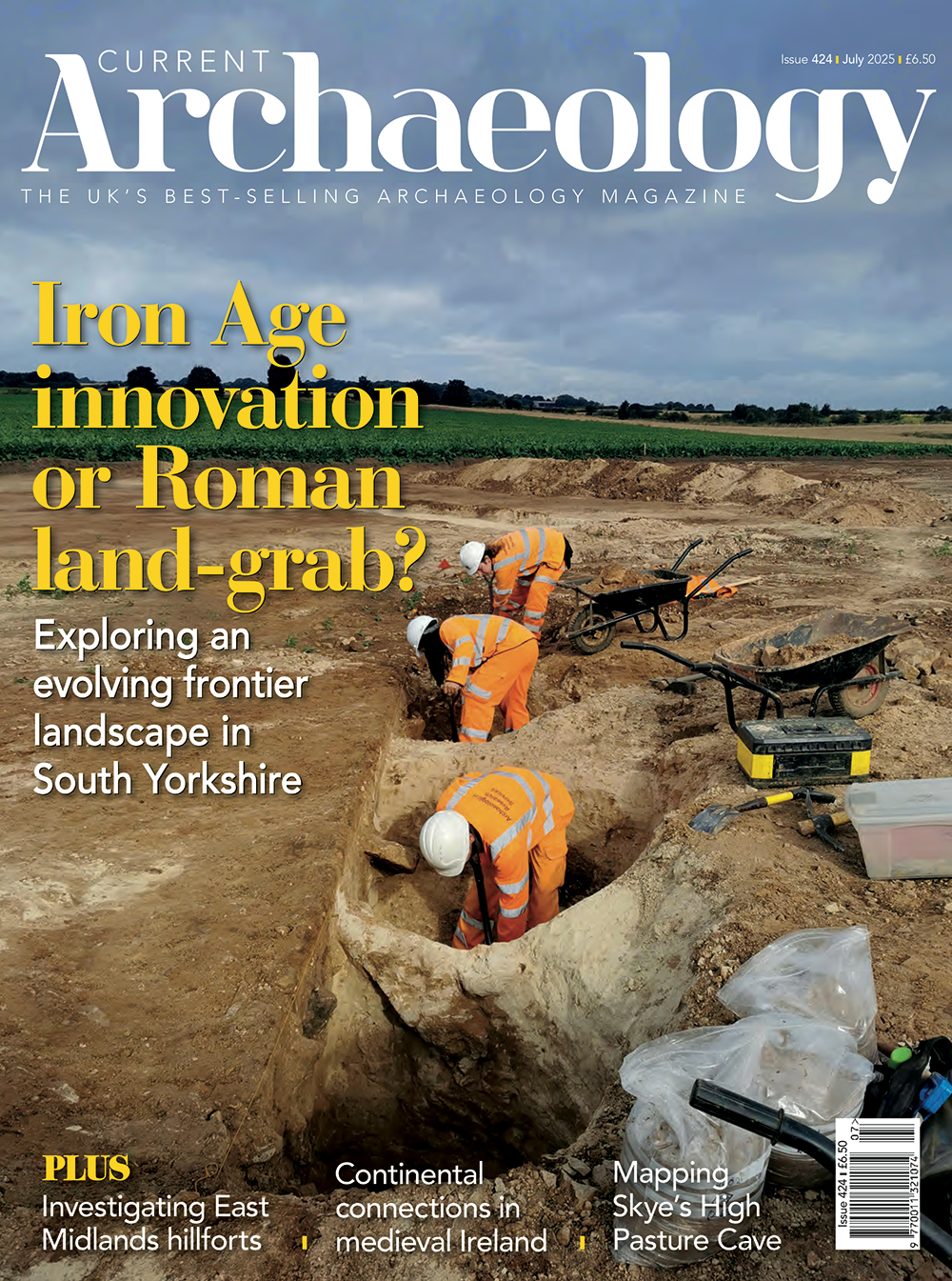This month’s cover feature takes us to Holme Hall Quarry in South Yorkshire, where archaeologists have uncovered dramatic evidence of how this frontier region was transformed during the early Roman period. Extensive, systematically planned field systems sprang up across the landscape at this time – but do these changes represent an innovation of local Iron Age peoples, or a land-grab by an occupying army?
Innovation is a key theme in our next article, too, which traces the flow of people, objects, and ideas between medieval Ireland and Continental Europe. Some of these ‘exiles for Christ’ travelled for scholarly or religious fulfilment, while others sought refuge from Viking raids devastating their monastic homes. We next revisit a discovery made in 2013 outside the Leicestershire village of Glenfield. Excavation of an Iron Age settlement revealed a collection of 11 cauldrons that had been placed in ditches across the site. What has subsequent conservation, research, and the construction of a full-sized replica revealed?
From buried cauldrons to subterranean ceremonies, we then travel to High Pasture Cave on the Isle of Skye, which has yielded evidence of intriguing Bronze Age and Iron Age ritual activities spanning 900 years.
Our last feature examines two Leicestershire hillforts: Burrough Hill and Breedon Hill. What can excavated evidence tell us about the experiences, activities, and interests of their Iron Age inhabitants?
Finally, I would like to offer a warm ‘welcome back’ to CA’s Deputy Editor, Kathryn Krakowka, who has returned from maternity leave, and a massive ‘thank you’ to Rebecca Preedy, who has done such a brilliant job at covering her role.

